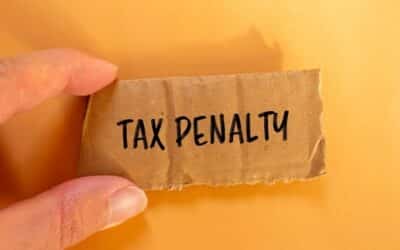Question: I own an interest in a limited liability company with others through which we operate a professional service business. Our company holds a significant amount of assets largely consisting of equipment, accounts receivable and cash. How can we protect the company assets from creditors in a tax-effective manner?
Answer: There are various actions you can take to protect limited liability company (“LLC”) assets from creditors. As a professional, your greatest liability concern is likely malpractice creditors. Procuring and maintaining professional liability insurance is no doubt the best form of protection from clients and others who file malpractice claims against the company. However, professional liability insurance is not always obtainable in sufficient amounts nor at affordable rates. Furthermore, claims may arise for which you may not have insurance in place. Other action can be taken to protect your company assets.
As your company holds equipment, you should consider distributing these assets to the owners. The owners in turn can, either individually or through a separate legal entity, lease the equipment back to the business, thereby separating the ownership of valuable assets from potential claimants of the entity operating the business. The lease should be in writing and contain commercially reasonable terms that are comparable to what the lease terms would be if the equipment were rented from an unrelated third party. The same technique can be used for other capital assets such as real estate owned by the operating entity. Business owners are best advised to lease valuable assets to an entity operating a business rather than have such assets owned by the operating entity where the liability is most likely to arise.
From a tax perspective, a limited liability company can generally distribute equipment and other non-cash assets to its owners without tax consequence. That is, distributions by a LLC of such assets will not be taxable to the company nor the owners receiving the distribution, even where the value of the distributed assets has appreciated and/or exceeds the owners’ basis in their LLC shares or ownership interests. The situation starkly contrasts to that of a corporation where distributions of appreciated assets can create a tax liability both at the corporate level and at the shareholder level.
Accounts receivable generally constitute significant assets of a service business although removing them from the operating entity can be more of a challenge. A common strategy for protecting company accounts receivable is to borrow money from a third party and secure the loan with a lien on the business accounts receivable and potentially other assets. The loaned funds can then be distributed to the owners as compensation. Although the cash distributed to the owners will be taxable income, the primary tax consequence is that income will be recognized at an earlier date than if the owners awaited collection of the accounts receivable before making the distribution. To the extent the accounts receivable are collected in the same year as they are pledged to the lender, no meaningful acceleration of income will have resulted. The lender will hold a lien on the company’s accounts receivable and perhaps other business assets. This would leave malpractice and other unsecured creditors of the business with limited access to LLC assets if a judgment against the company is procured.
In undertaking any distribution of company assets and other asset protection strategies, business owners must be mindful of fraudulent conveyance laws. The best time to engage in asset protection planning is before the occurrence of an event which may give rise to a claim and certainly before any lawsuit is filed. If there are outstanding creditors of the practice, distributing assets from the company may be deemed to constitute a fraud on company’s creditors which could result not only in the unwinding of the transaction but the imposition of liability on participants in the transaction.
Remember that all individuals are liable for their own improper actions. In the case of a professional service provider who commits an act of malpractice, the service provider will be personally responsible for such actions. In your case, asset protection planning might begin with protecting entity assets but should encompass personal planning as well.
The Tax Corner addresses various tax, estate, asset protection and other business matters. Should you have any questions regarding the subject matter or if you have questions you want answered, you may contact Bruce at (312) 648-2300 or send an e-mail to [email protected].


